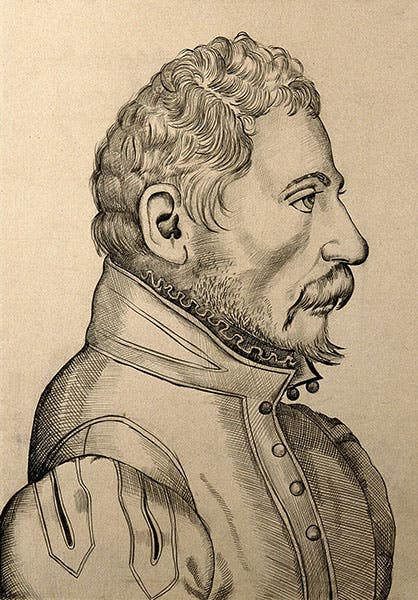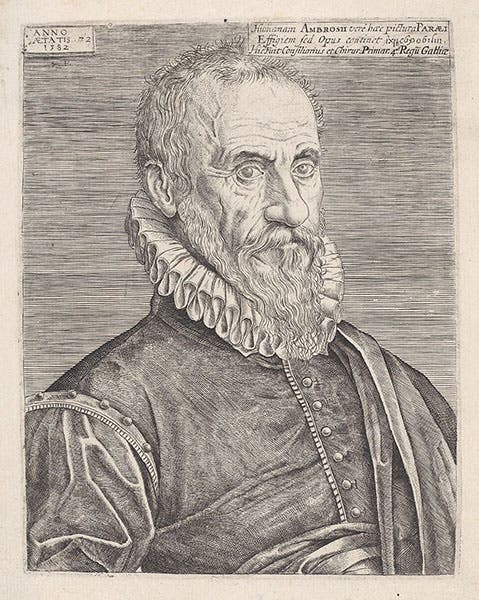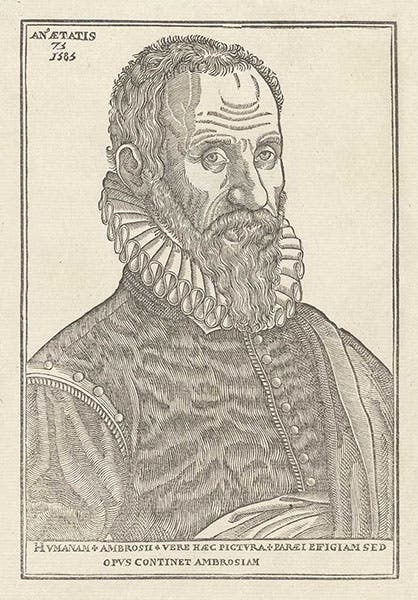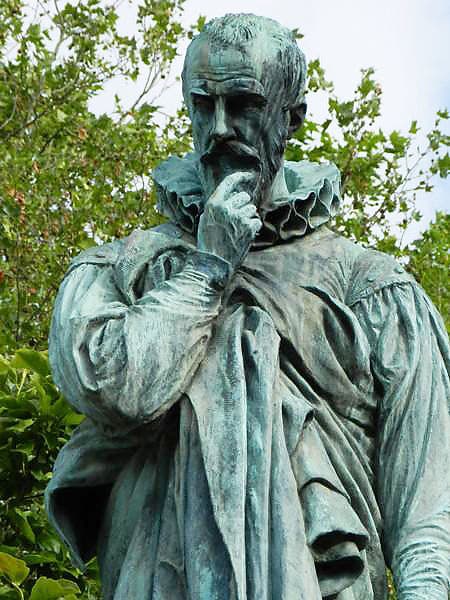Scientist of the Day - Ambroise Paré
Ambroise Paré, a French surgeon, died Dec. 20, 1590, at the age of about 80. Paré came from a small town near Laval in what was then the province of Maine, about 200 miles west-southwest of Paris. Like most surgeons, and unlike physicians, he was trained as an apprentice, in this case, to his older brother in Paris. He also received some training at the Hōtel-Dieu, the hospital in Paris that was the surgical analog to the medical school at the University of Paris (where his contemporary, Andreas Vesalius, received some of his medical training). There were three medical fraternities in 16th-century Paris: physicians, the company of surgeons, and the barber-surgeons. Paré was a barber-surgeon. But he spent most of his years as a battlefield surgeon, since King Francis of France was busily engaged in what were called the “Italian Wars”, in which the French and the Holy Roman Empire (and the Pope) battled over northern Italy. Those wars ended in 1559, but then France was wracked by internal conflict between Catholics and Huguenots in the French Wars of Religion. The warfare never ceased, and the surgeons were never out of work.
Battlefield surgery was not a pretty science in the mid-16th-century. The principal tasks of the surgeon were amputating limbs and treating gunshot wounds. When a limb had been amputated, the immediate danger was bleeding to death, and the conventional treatment was to cauterize the blood vessels with red-hot irons, essentially searing them shut. For gunshot wounds, the customary remedy was to sterilize and seal the wound with boiling linseed or elder oil. Needless to say, both procedures were excruciatingly painful, and not especially efficacious. Paré, in an autobiographical account called Apologie (1585), tells us that during one battle, he ran out of oil, and so he decided to try an old Roman remedy, a poultice of turpentine, rose-water, and egg-white. He says that it was with some trepidation that he checked his patients in the morning, and he was surprised to find that they were resting comfortably, while those treated with boiling oil were still traumatized by the pain. In a similar manner, Paré searched for some other method besides cauterization to seal off blood vessels after amputation, and he decided to try sewing the vessels shut, using a procedure called ligature, again a method used by ancient physicians. He found that the patients were much less troubled by pain, and perhaps had a better chance of recovery. He eventually invented all sorts of clamps to aid the ligature process.
So Paré contributed to creating a new kind of surgery, one where a principal goal was to reduce the suffering of the patient. It was the harbinger of the surgery of the future. His surgical skills were recognized by the crown; he became surgeon to the King of France, Henry II, and he maintained that position through three more French monarchs.
Unusually for a surgeon, Paré wrote accounts of his battlefield methods, as well as treatises on wounds, the plague, obstetrics, and prosthetic limbs. These were published at regular intervals throughout his life, and then collected into an Oeuvres, the first edition being published in 1575. Unlike the fiery Paracelsus, Paré was an unpretentious and humble man, and he invariably concluded each account of a case with the modest phrase, “I dressed him, God cured him.” He wrote in French, while his physician colleagues were continuing to write in Latin, and his Oeuvres went through four editions in Paré’s lifetime, and many more into the 17th century.
Since we are not a medical library, we have no works by Paré. So for this post, I decided to feature some of his portraits. Paré is unusual among Renaissance figures of any kind in having been portrayed four times, with each of his portraits dated (by contrast, we have one contemporary portrait print of Andreas Vesalius). Three of these accompanied editions of his Oeuvres, and one was the frontispiece for a 1562 book on anatomy. We show you all four, borrowed from the Wellcome Collection, the National Library of Medicine, and the Met. To me, his portraits present the same humble, compassionate nature than comes across in his Apologie.
There is also a statue of Paré in a city square in Naval. It is not contemporary, but it is worth viewing. It was sculpted in bronze around 1839 by the great 19th-century sculptor David d’Angers (fifth image). There is a much reduced version in bronze in the Philadelphia Museum of Art.
In 1952, the noted bibliographer Geoffrey Keynes put together a collection of translations of Paré’s writings, selected from the 1634 English edition of Paré’s Workes, and Keynes called it The Apologie and Treatise of Ambroise Paré. For many years it was available as a Dover paperback, and although it has long been out of print, there are still used copies out there in second-hand bookstores. It is a book worth finding, for it is a readable, fascinating, and sobering introduction to the world of Renaissance surgery, mostly in Paré’s own words, and a testament to the impact that one sensible, caring person can have. I remember reading it in graduate school, right after I finished reading the other great Renaissance autobiography, that of the egomaniacal Benvenuto Cellini. Both were eye-openers and well worth reading, but only that of Paré made me think, that was a wonderful human being.
William B. Ashworth, Jr., Consultant for the History of Science, Linda Hall Library and Associate Professor emeritus, Department of History, University of Missouri-Kansas City. Comments or corrections are welcome; please direct to ashworthw@umkc.edu.











